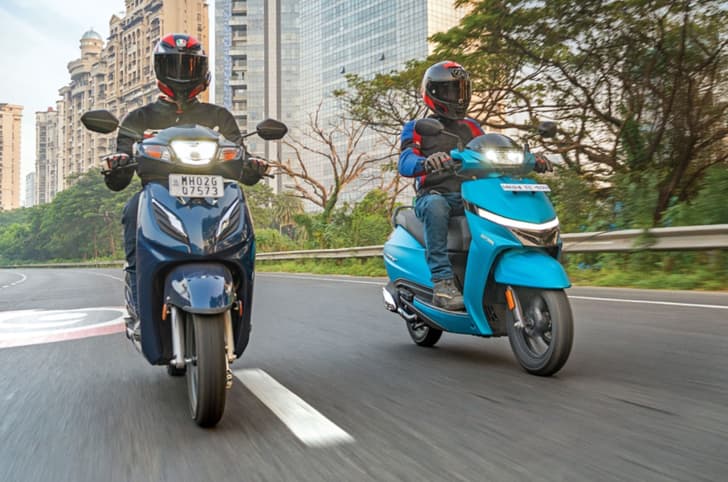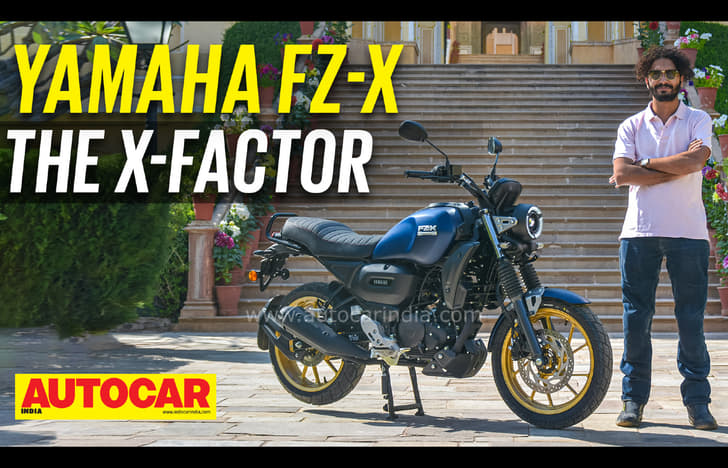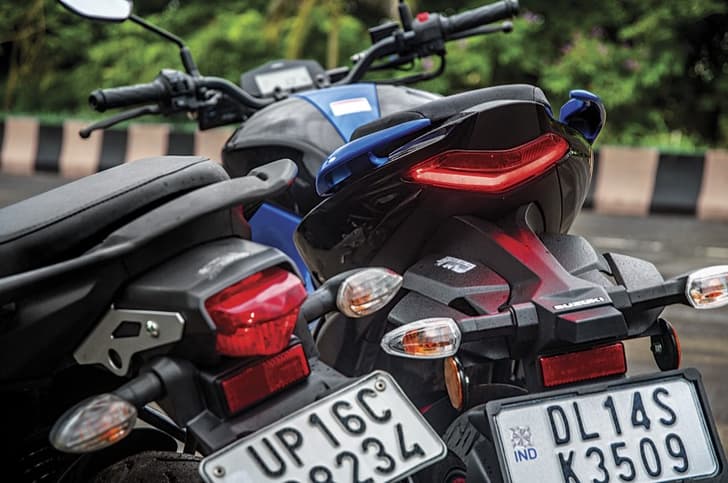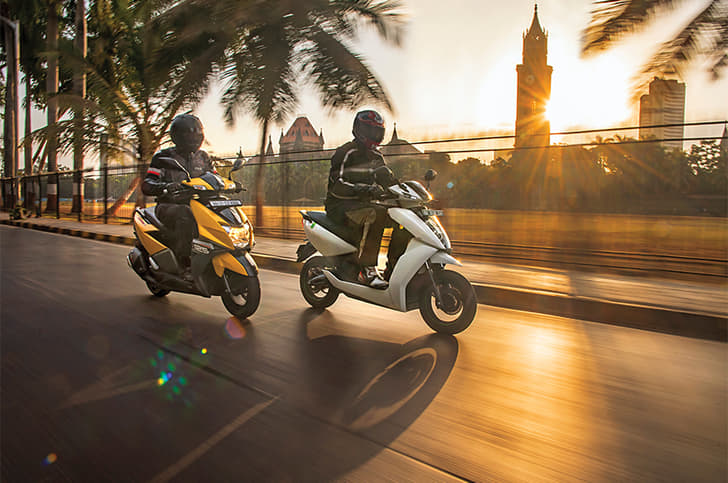Logic and emotions are at such opposite ends, no? What may seem logical may not appeal to the emotional side and vice versa. And that’s exactly the conundrum some modern-classic motorcycle shoppers face today. Up until last year, the Royal Enfield Classic 350 was the obvious, and frankly, the only choice for those looking to own a motorcycle made by a company with a rich heritage. Not to forget, the sense of pride, prestige and belonging that one feels while buying into the revered RE family.
But, in 2018, Jawa made a comeback and with it returned the memories of an age where blue fumes from the tailpipe of a two-stroke Jawa filled busy streets. It was an era where the absolutely unique, buzzy tune of a two-stroke motor was akin to a beating heart. It was alive and kicking, and surely, had countless fans who loved the sounds and smells emanating from a Jawa’s exhaust. The new Jawas are wrapped in a design that seems like a stencil drawing of the original, and it has succeeded in attracting young fans and their uncles to showrooms in droves. The Jawa Forty Two you see here wears the slightly more modern design and is the one that sees a higher demand. Speaking of which, despite the shockingly long waiting periods, customer interest appears to shows no signs of ebbing.
Benelli, naturally, wants a slice of this juicy pie as well, and has brought the Imperiale 400 to our shores to challenge the Royal Enfield and Jawa. However, it’s treading into waters where it takes much more than just a good product to stay afloat. The motorcycle’s got to not just look the part of a proud retro machine, but also feel the part too, and it must establish an emotional connect. With no real history in India, a country with legions of Jawa and Royal Enfield worshippers, can the Benelli hold a candle to these mighty gales.

| Specifications | |||
|---|---|---|---|
| Benelli Imperiale 400 | Jawa Forty Two | RE Classic 350 | |
| Price (ex-showroom, Delhi) | Rs 1.69 lakh | Rs 1.55 lakh/Rs 1.64 lakh (rear disc) | Rs 1.64 lakh |
| Engine layout | Single-cylinder, air-cooled, SOHC | Single-cylinder, liquid-cooled, DOHC | Single-cylinder, air-cooled, OHV |
| Displacement | 374cc | 293cc | 346cc |
| Power | 21hp at 5500rpm | 27hp at 6000rpm | 19.8hp at 5250rpm |
| Torque | 29Nm at 4500rpm | 28Nm at 4750rpm | 28Nm at 4000rpm |
| Gearbox | 5-speed | 6-speed | 5-speed |
| Wheelbase | 1440mm | 1369mm | 1390mm |
| Seat height | 780mm | 765mm | 800mm |
| Ground clearance | 165mm | NA | 135mm |
| Fuel tank | 12 litres | 14 litres | 13.5 litres |
| Kerb weight | 205kg (unladen) | 170kg | 194kg |
| Front suspension | Telescopic fork | Telescopic fork | Telescopic fork |
| Rear suspension | Twin shock absorbers | Twin shock absorbers | Twin shock absorbers |
| Front brake | 300mm disc | 280mm disc | 280mm disc |
| Rear brake | 240mm disc | 153mm (drum) | 240mm (disc) |
| Tyre size (f/r) | 100/90-19 / 130/80-18 | 90/90-18 / 120/80-17 | 90/90-19 / 110/90-18 |
Love at first sight
A majority of those who like modern-classic motorcycles do so because their old-school design is too alluring to ignore. Among this trio, it is the Jawa Forty Two that grabs the most attention – and that has to do with its clean and proportionate design. Everything, from the tank to the shape of the fenders, from the offset single-pod instrument cluster to the twin tailpipes reminds you of a bygone era. In this fetching Royal Blue shade, and with the gold hand-painted stripes, it leaves one besotted. It’s so pretty and compact that it looks like a little damsel besides the two brutes in this test, of which the Classic 350 is the oldest.
It has been around for over a decade but you’d be forgiven for thinking it was even longer because the design harks right back to the Enfields of yesteryear. In this Signals paintwork, the blacked-out wheels, engine and exhaust attempt to add a modern touch to a motorcycle that has aged gracefully.

You will see a similar blacked-out effect on the Imperiale 400, except that its wheels are covered in chrome. Benelli, in fact, has been conscious about not adding unnecessary amounts of this shiny element. To me, this is what lends the Imperiale a classy air. It looks polished and a notch above the other two; a fact that resonates when you also look at how well it’s been put together and finished. On the polar end, the Royal Enfield is decently built but the quality of some of the materials and even the way things have been screwed together is distasteful and doesn’t feel worth the money. The Jawa is close to the Benelli in terms of quality and finish; we did, however, spot a few specks of rust on some bolts and on the rear shocks, even though our bike was under 2,000km old. The instrument cluster would also fog up from even the slightest presence of moisture – an issue we noticed with the very first lot of test bikes from last year as well.
Beyond the good looks, it’s the way one feels from being sat behind the handlebar that underlines these motorcycles’ feel-good factor. The Jawa, in this regard, is hampered by its small size. Its seat height, at 765mm, is the lowest of the three (a boon for short riders), but it’s not as spacious or accommodating as the other two. The seat is also far too thin and it is the one that gets painful the fastest of the trio. Another issue is that there’s not much distance between the foot pegs and the seat, and this means the ergonomics are only comfortable for shorter runs. Long rides will be a bother for tall people, especially if you’re as tall as long-legged Rishaad! That said, I like its gentle tilt towards a sporty position and it’s in keeping with its demeanour, which I will touch upon later.

The Royal Enfield’s riding position is pretty laid back, again in tune with its character, but what people like the most is the bolt upright riding position and the commanding feeling of sitting on top of the motorcycle. However, the spring-loaded seat got uncomfortable after a couple of hours and I kept longing to switch over to the Benelli’s perch. That’s because the Imperiale 400 has the widest and most well-cushioned seat, and thanks to the forward-set foot pegs and wide handlebar, the riding position feels the most relaxed of all. I could easily see myself enjoying long hours in this saddle, and come to think of it, isn’t that the whole point of these motorcycles? But great ergonomics are of no use if the motor between your legs is not good enough to handle long rides or even a short run for that matter.
On the beat
The Royal Enfield’s 346c engine has been around for ages. The long-stroke engine makes nearly as much power as the Benelli’s 374cc, single-cylinder engine (with an identical 90mm stroke) and the same amount of torque (28Nm) as the Jawa’s 293cc motor. However, it’s in no hurry to get you anywhere. Revs build up much slower than the other two engines and so does the rise in speed. It’s almost as if “laid-back and chilled” were its middle name! As you may have deduced by now, the Enfield is the slowest of the lot, whether it’s in the sprint up to 60kph or the roll-on figures. But as the Royal Enfield tribesmen proclaim, the Classic is not about all-out speed but low-end torque, and that makes chugging along effortless. Its motor has the strongest bottom-end torque and that gives the Enfield tractability to effortlessly tackle low-speed city rides or climb up high mountain roads. I mean, haven’t you seen the sheer number of RE Classics that dot the Ladakhi landscape every summer?

But, in order to get to said mountain roads, you’d have to cover considerable distances on long open highways and that’s where the Enfield’s motor exhibits its aversion to high speeds. Anything below 75-80kph will keep the Enfield happy, with the resounding thump from the exhaust adding to the experience. However, pick up the pace and the engine feels laborious, clearly unhappy with the demands of the right wrist. What will also leave you miserable is the excessive vibrations in the pegs and handlebar that’ll threaten to dislodge your shoulders from their sockets. Okay, that’s a bit of an exaggeration. But let’s not argue vibrations have to be a part of a big single’s character because here’s where the Benelli sets a class benchmark in refinement for a big, air-cooled engine. Whether it’s at slow speeds or barreling down the highway with the needle hovering just beyond 100kph, the motor feels a world smoother. The vibrations that creep in through the bars or pegs at high speeds are also much lower and quite acceptable. But it’s not just about the speed, the engine also has this relaxed nature that makes the Imperiale so endearing. Unlike the Royal Enfield, I’d happily cruise for extended hours on the Benelli and arrive at my destination without numb hands and feet. I also have to mention that the Benelli sounds really good; it has a faster-paced beat than the Enfield, but it’s a sound I find sweeter.
But, for those who prefer engines with a dash of zing, the Jawa’s motor is on another level. Unlike the long-stroked Enfield and Benelli, the Jawa’s short-stroke format lends it an eager to rev nature. It is also the only motorcycle here to have taken the ‘modern’ in modern-classic quite seriously. The Mahindra Mojo-derived DOHC engine is liquid-cooled and mated to a 6-speed transmission, whereas the others have 5-speed gearboxes.

On the move, the speed rises rapidly as the short gearing ensures that the motor is spinning in the meat of its powerband. Naturally, this makes the Jawa the quickest motorcycle by quite a margin, under any given circumstance. It’s always eager and ready to shoot off in the distance, leaving the other two in the wake of its dust cloud. At cruising speeds, the engine is bereft of vibrations, except at certain points in the rev range but it doesn’t feel intrusive in any way. That said, at city speeds, the lack of low-end grunt is apparent and there were a couple of instances when the engine stalled without notice. However, I wouldn’t call this a deal-breaker in any way. As far as emotional feel goes, this engine feels completely modern and it wants to be revved like a modern motorcycle. For what it is, the Jawa’s engine is engaging, but the short gearing cuts down on relaxed highway ability, even though it has the highest top speed here of about 130kph.
Easy riders
The Jawa’s low weight and short wheelbase (1,369mm) makes it the sweetest handling motorcycle, and when the long highway gives way to a winding ribbon of tarmac, it’s the Forty Two that’ll keep you entertained to the hilt. It’s the most eager to turn in and once past this point, it sticks to an intended line. Its flickability also makes it a great tool to dart in and out of traffic, in a way that deceives its retro garb. Benelli’s 1,440mm wheelbase, on the other hand, makes it look like an oil tanker next to the Jawa, which is more super yacht in comparison. But, as is the case with the Benelli’s motor, its large size belies its handling prowess. Surely, it isn’t a corner carver but it doesn’t feel a handful either. Despite weighing the heaviest, at 205kg, the Imperiale feels surprisingly light on its feet, requiring less effort to turn in than what one might expect. The long wheelbase also translates to great mid-corner stability, aided by its tyres which are the widest in this test. The Royal Enfield’s handling is pretty neutral as well, however, its narrow tyres, top-heavy feeling and squishy chassis do little to inspire confidence at steep lean angles. The trade-off, however, comes in the form of a plush ride, and when the terrain gets rough, the Enfield begins to shine. The Benelli’s ride quality is nearly on par with the Royal Enfield’s. It, however, does get a little bouncy at the rear, especially over a set of successive bumps and undulations. The Jawa’s ride is the stiffest of the lot, but it’s not harsh and it makes for a happy compromise, given its sweet handling.
The Benelli pulls another surprise out of its hat by stopping in the shortest distance (16.82m) from 60kph, closely followed by the Jawa. That said, feel at the lever isn’t great, as it sticks out far too much and is difficult to use. The Royal Enfield takes the longest time to come to a halt while its wooden brake lever robs you of feel and progression. But the actual braking distance is not bad and there’s dual-channel ABS keeping everything safe.

End Of The Day
In a world full of technologically advanced, high-revving and eager motorcycles, these retro machines have carved out a large section of the market for themselves. These motorcycles represent the simple pleasures of wafting down the road at a relaxed pace, while soaking in the vistas. It’s the Royal Enfield that kick-started this trend in the mainstream and even after 10 years, there are people willing to shell a lot of money to own one. This is because those who purchase Royal Enfields also buy into an enormous community and that sense of belonging is part of the reason behind the Classic’s incredible success. But the competition has clearly caught up and moved ahead by quite a margin. With an all-new Royal Enfield Classic series over the horizon, there’s much to look forward to, going by how good the 650 platform turned out to be, but as of today, it comes in last.
The Jawa Forty Two evokes similar emotions when it comes to memories and heritage, and that makes owning one hugely aspirational, even though the riding experience has little to do with the original. So much so, in fact, many customers have had to wait nearly a year to get their Jawas, as Classic Legends sorts out its demand-supply issues. The Forty Two is quite involving and fun to ride, its cramped dimensions notwithstanding. And this is what will appeal to those looking for a peppy motorcycle draped in a gorgeous design. But, as good as it may be, it falls behind when it comes to the riding experience, something that customers in this segment want.
In that respect, the Benelli does the best job of offering those old-world charms without the old-world pains. It is the most well-rounded product in this comparison, the one with good looks, sorted ergonomics and a lovely engine as well. It’s nice to ride too, and at the end of a long day, it was the Benelli’s key that was the most sought after. The only thing missing is the relative lack of history and memories in the Indian context, stuff that both the Royal Enfield and Jawa are brimming with. That’s what makes them appeal to the emotional side, while the Benelli is simply the logical choice. Question is, which side are you on?
| Performance | |||
|---|---|---|---|
| Benelli Imperiale 400 | Jawa Forty Two | RE Classic 350 | |
| 0-60kph | 5.02s | 4.01s | 7.53s |
| 0-100kph | 14.13s | 11.54s | NA |
| 20-50kph in 2nd | 3.77s | 2.73s | 4.57s |
| 30-70kph in 3rd | 7.07s | 5.05s | 9.08s |
| 50-80kph in 4th | 8.29s | 5.42s | 11.15s |
| 60-0kph (distance) | 16.82m | 16.94m | 17.59m |
| Fuel efficiency (city) | 30.28kpl | 32.75kpl | 30.47kpl |
| Fuel efficiency (highway) | 35.32kpl | 38.8kpl | 35.2kpl |










































